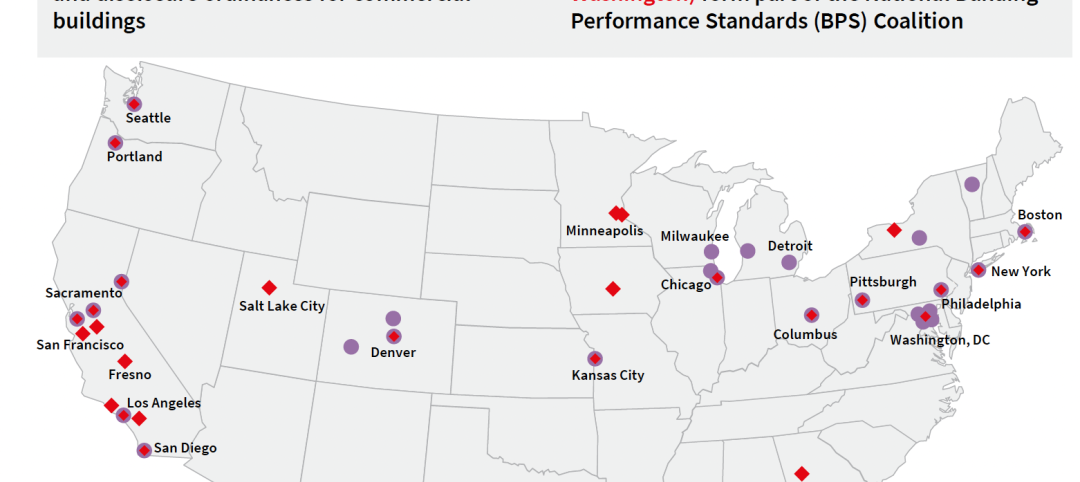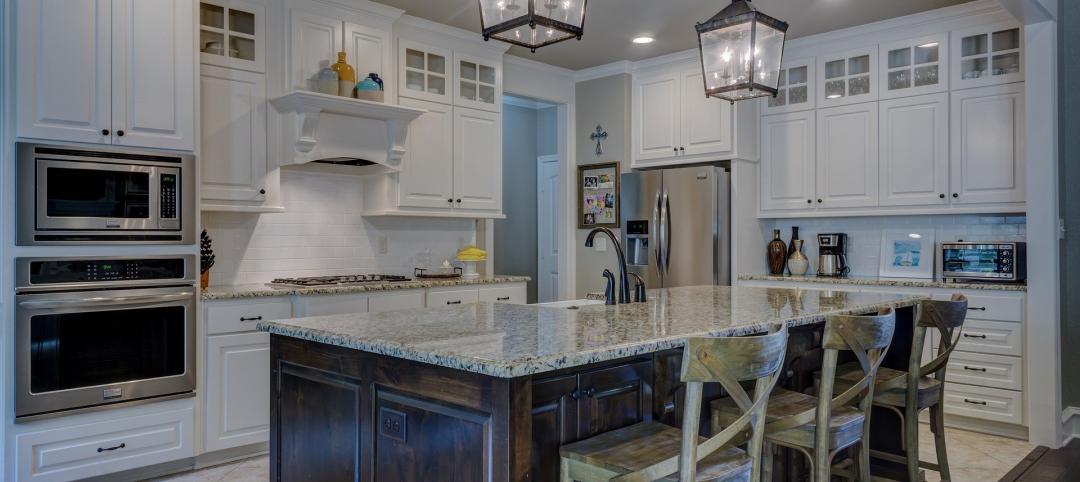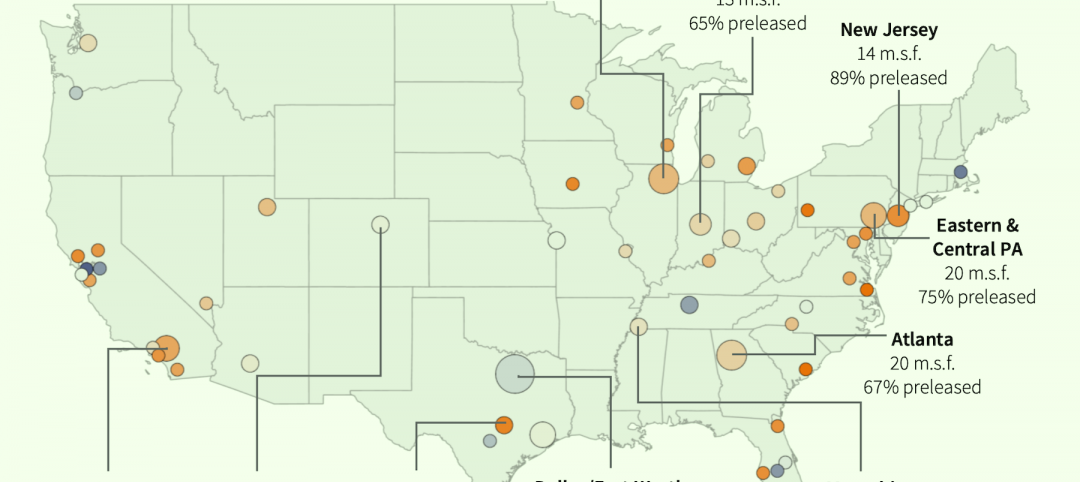A new “Equity in Architecture” survey finds that women and people of color continue to lag white men at architecture firms in career success measures such are salaries and advancement. This “achievement gap,” according to this survey, is less the result of systemic racism or sexism (although both still play in the background, like elevator music, at many firms), and more due to the lack of transparency in a firm’s process of promotions, equal access to its senior leaders, ongoing performance feedback, and having meaningful relationships at work.
The survey, conducted by the Equity by Design committee of AIA San Francisco, is based on responses to more than 80 questions from 8,664 graduates of architecture schools who are either working for an architecture firm, have worked for a firm but currently are employed in another profession, or have worked for a firm but are taking a career break or leave of absence.
The vast majority of respondents, nearly 7,000, are white males or females. And 6,600 respondents currently work at an architecture firm.
Nearly 80% of respondents said they shared their companies’ values, and 60% are engaged in decision-making and “find my work meaningful.” However, a deeper dive into the responses finds that in virtually every metric of success—including autonomy, compensation, confidence, meaningful work, focus, and work-life balance—men are more positive about their situations than women are.
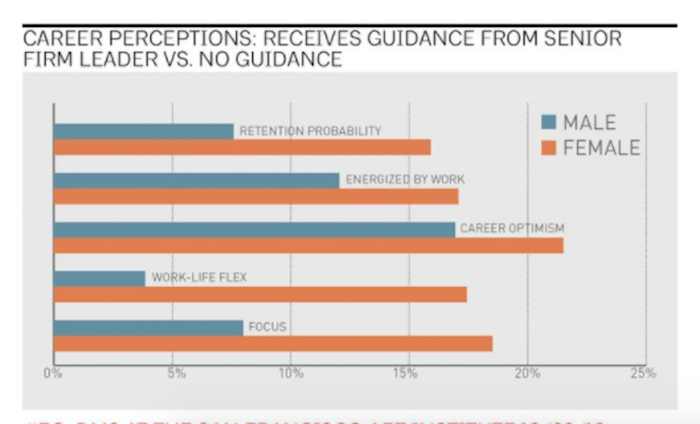
The survey finds that female architects who are encouraged by a firm's senior leaders are more likely to stay with that job, and feel better about it, than men archtects. Image: Atelier Cho Thompson, courtesy of AIA San Francisco Equity in Design Committee.
One reasons might be that men are better prepared than women to take on new roles, based on their perceived respective access to a firm’s partner, principal or direct manager for professional guidance. Mentoring is critical to retention, and when women receive guidance from one of their firm’s senior leaders, they are more likely than men to stay at their jobs, be energized by their work, and be optimistic about their careers. Career guidance also has a positive effect on women architects’ attitudes about work-life balance and “focus.”
One-fifth of the survey’s respondents said that the top reason why they left their last job was low pay. And the survey finds ongoing disparities in the salaries being paid men versus women. For example, the average salary for male respondents with eight to 10 years’ experience was around $75,000, versus around $70,000 for women with the same tenure. The salary gap between men and women widens with experience. And a woman architect who is a parent, regardless of experience, is likely to be paid less than childless women, or men with or without children.
Annelise Pitts, a designer with Bohlin Cywinski Jackson and research chairman of Equity by Design, notes that women—who account for two-fifths of architecture school graduates—early in their careers often get shuttled into less-than-edifying tasks like office manager or office librarian. This “gender sorting,” says Pitts, gives women less of a shot at eventually being included in the firm’s strategic management decisions.
Once an architect has been with a firm for more than a decade, there is a significant jump in his or her perception about the likelihood of becoming a principal in their firm. However, more than half of all respondents said their firms’ leadership is “mostly male.” And 27% of male respondents and 32% of female respondents said their companies’ promotion process is either somewhat or very ineffective. Non-white males are the least likely employees to be made principals, the survey showed.
(While the survey only touches on workplace diversity, Pitts says that the biggest issue for the architectural industry remains “getting people of color into the pipeline in the first place.” Research also finds that even when minority employees are hired, they are more likely to leave firms sooner than white men or women.)
More than three-fifths of the respondents said they have “scheduling conflicts” that present challenges to maintaining a work-life balance. And women more than men attribute poor health, neglected duties, and relationship conflicts in their personal lived to this imbalance. “Women seem more willing to compromise their personal lives for work,” says Pitts. However, women are also more likely than men to turn down work-related travel because of conflicts with their personal lives.
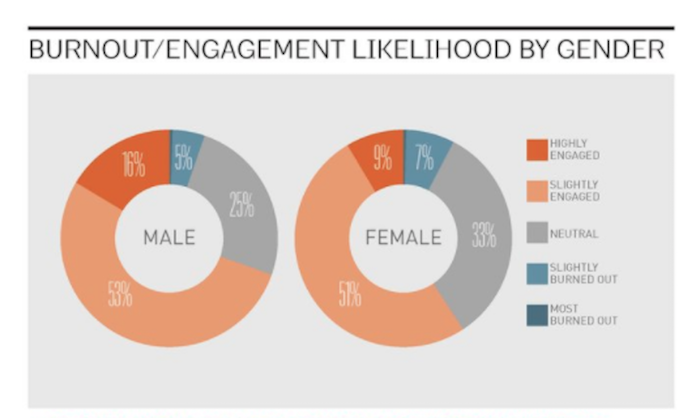 Women architects are more likely than men to sacrifice their personal lives for work, but are also more likely to feel the pressures of the job. Image: Atelier Cho Thompson, courtesy AIA San Francisco Equity in Design committee.
Women architects are more likely than men to sacrifice their personal lives for work, but are also more likely to feel the pressures of the job. Image: Atelier Cho Thompson, courtesy AIA San Francisco Equity in Design committee.
Burnout is more prevalent among women, especially those with less than five years experience. Half of the female respondents with five or fewer years on the job left their firm, compared to 42% of men with that same tenure who exited. Interestingly, more-tenured women appear to be less likely to leave their firms than experienced men.
Among the respondents, 667 men and 719 women currently work outside of an architecture practice. The vast majority works in another field, with a relatively small number—less than 10%—either being a full-time caregiver, a student, unemployed, or retired.
The solution to hiring and retention problems at architecture firms the survey exposes, says Pitts, comes down to them having policies in place that emphasize progressive and fair employee development, and enforcing those policies equitably and transparently. “Companies need to walk the walk,” she says.
Related Stories
Mass Timber | Dec 1, 2022
Cross laminated timber market forecast to more than triple by end of decade
Cross laminated timber (CLT) is gaining acceptance as an eco-friendly building material, a trend that will propel its growth through the end of the 2020s. The CLT market is projected to more than triple from $1.11 billion in 2021 to $3.72 billion by 2030, according to a report from Polaris Market Research.
Contractors | Nov 30, 2022
Construction industry’s death rate hasn’t improved in 10 years
Fatal accidents in the construction industry have not improved over the past decade, “raising important questions about the effectiveness of OSHA and what it would take to save more lives,” according to an analysis by Construction Dive.
K-12 Schools | Nov 30, 2022
School districts are prioritizing federal funds for air filtration, HVAC upgrades
U.S. school districts are widely planning to use funds from last year’s American Rescue Plan (ARP) to upgrade or improve air filtration and heating/cooling systems, according to a report from the Center for Green Schools at the U.S. Green Building Council. The report, “School Facilities Funding in the Pandemic,” says air filtration and HVAC upgrades are the top facility improvement choice for the 5,004 school districts included in the analysis.
Industry Research | Nov 8, 2022
U.S. metros take the lead in decarbonizing their built environments
A new JLL report evaluates the goals and actions of 18 cities.
Reconstruction & Renovation | Nov 8, 2022
Renovation work outpaces new construction for first time in two decades
Renovations of older buildings in U.S. cities recently hit a record high as reflected in architecture firm billings, according to the American Institute of Architects (AIA).
Hotel Facilities | Oct 31, 2022
These three hoteliers make up two-thirds of all new hotel development in the U.S.
With a combined 3,523 projects and 400,490 rooms in the pipeline, Marriott, Hilton, and InterContinental dominate the U.S. hotel construction sector.
Laboratories | Oct 5, 2022
Bigger is better for a maturing life sciences sector
CRB's latest report predicts more diversification and vertical integration in research and production.
Multifamily Housing | May 11, 2022
Kitchen+Bath AMENITIES – Take the survey for a chance at a $50 gift card
MULTIFAMILY DESIGN + CONSTRUCTION is conducting a research study on the use of kitchen and bath products in the $106 billion multifamily construction sector.
Market Data | Apr 14, 2022
FMI 2022 construction spending forecast: 7% growth despite economic turmoil
Growth will be offset by inflation, supply chain snarls, a shortage of workers, project delays, and economic turmoil caused by international events such as the Russia-Ukraine war.
Industrial Facilities | Apr 14, 2022
JLL's take on the race for industrial space
In the previous decade, the inventory of industrial space couldn’t keep up with demand that was driven by the dual surges of the coronavirus and online shopping. Vacancies declined and rents rose. JLL has just published a research report on this sector called “The Race for Industrial Space.” Mehtab Randhawa, JLL’s Americas Head of Industrial Research, shares the highlights of a new report on the industrial sector's growth.






